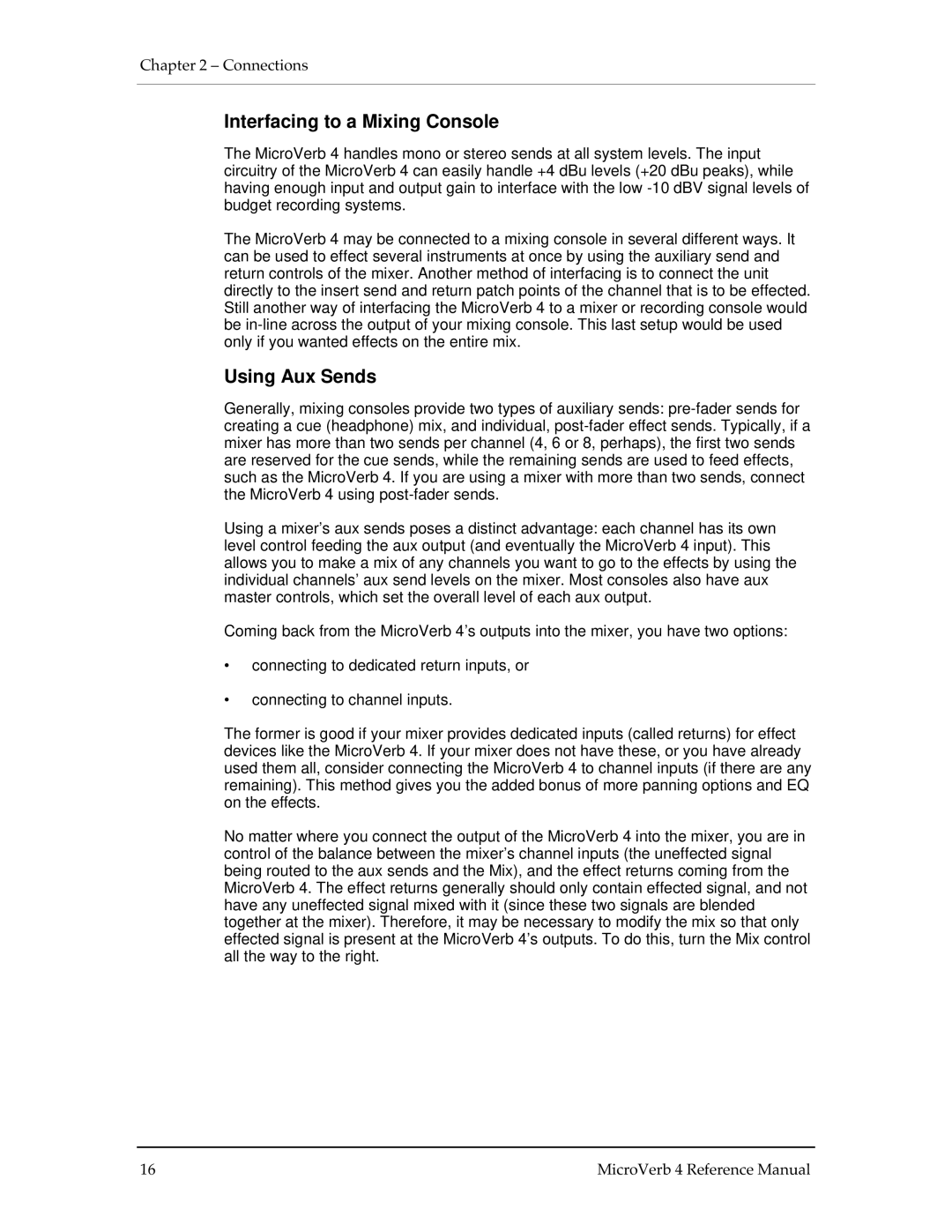
Chapter 2 – Connections
Interfacing to a Mixing Console
The MicroVerb 4 handles mono or stereo sends at all system levels. The input circuitry of the MicroVerb 4 can easily handle +4 dBu levels (+20 dBu peaks), while having enough input and output gain to interface with the low
The MicroVerb 4 may be connected to a mixing console in several different ways. It can be used to effect several instruments at once by using the auxiliary send and return controls of the mixer. Another method of interfacing is to connect the unit directly to the insert send and return patch points of the channel that is to be effected. Still another way of interfacing the MicroVerb 4 to a mixer or recording console would be
Using Aux Sends
Generally, mixing consoles provide two types of auxiliary sends:
Using a mixer’s aux sends poses a distinct advantage: each channel has its own level control feeding the aux output (and eventually the MicroVerb 4 input). This allows you to make a mix of any channels you want to go to the effects by using the individual channels’ aux send levels on the mixer. Most consoles also have aux master controls, which set the overall level of each aux output.
Coming back from the MicroVerb 4’s outputs into the mixer, you have two options:
•connecting to dedicated return inputs, or
•connecting to channel inputs.
The former is good if your mixer provides dedicated inputs (called returns) for effect devices like the MicroVerb 4. If your mixer does not have these, or you have already used them all, consider connecting the MicroVerb 4 to channel inputs (if there are any remaining). This method gives you the added bonus of more panning options and EQ on the effects.
No matter where you connect the output of the MicroVerb 4 into the mixer, you are in control of the balance between the mixer’s channel inputs (the uneffected signal being routed to the aux sends and the Mix), and the effect returns coming from the MicroVerb 4. The effect returns generally should only contain effected signal, and not have any uneffected signal mixed with it (since these two signals are blended together at the mixer). Therefore, it may be necessary to modify the mix so that only effected signal is present at the MicroVerb 4’s outputs. To do this, turn the Mix control all the way to the right.
16 | MicroVerb 4 Reference Manual |
